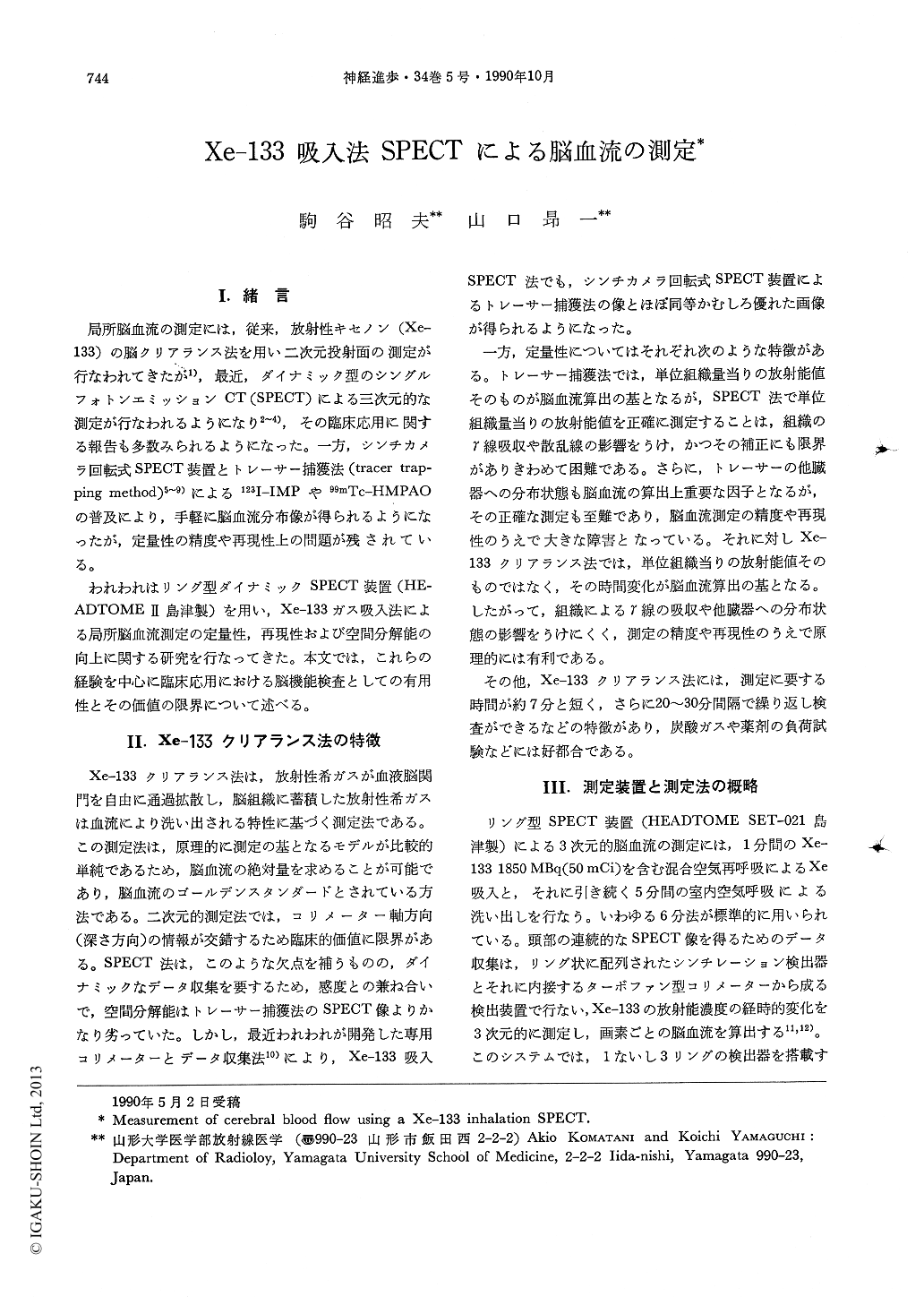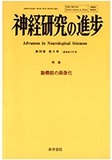Japanese
English
- 有料閲覧
- Abstract 文献概要
- 1ページ目 Look Inside
I.緒言
局所脳血流の測定には,従来,放射性キセノン(Xe-133)の脳クリアランス法を用い二次元投射面の測定が行なわれてきたが1),最近,ダイナミック型のシングルフォトンエミッションCT(SPECT)による三次元的な測定が行なわれるようになり2~4),その臨床応用に関する報告も多数みられるようになった。一方,シンチカメラ回転式SPECT装置とトレーサー捕獲法(tracer trapping method)5~9)による123I-IMPや99mTc-HMPAOの普及により,手軽に脳血流分布像が得られるようになったが,定量性の精度や再現性上の問題が残されている。
われわれはリング型ダイナミックSPECT装置(HE-ADTOMEII島津製)を用い,Xe-133ガス吸入法による局所脳血流測定の定量性,再現性および空間分解能の向上に関する研究を行なってきた。本文では,これらの経験を中心に臨床応用における脳機能検査としての有用性とその価値の限界について述べる。
The technique of single photon emission computed tomography (SPECT) has a greater possibility in popularization for daily clinical use than that of positron emission tomography (PET) because of its simplicity and inexpensiveness. In the technique of SPECT, Xenon-133 inhalation method is the most excellent means for the in vivo quantitative measurement of regional cerebral blood flow (rCBF) in the human brain. In this review describes the methods measuring regional cerebral blood flow using the ring-type SPECT : HEADTOME, and clinical role and usefulness as a functional examination of the brain.

Copyright © 1990, Igaku-Shoin Ltd. All rights reserved.


